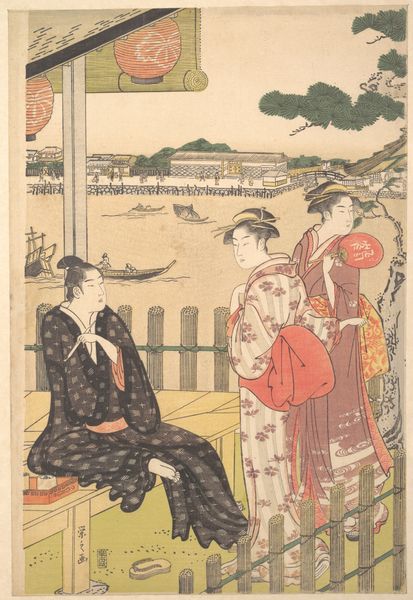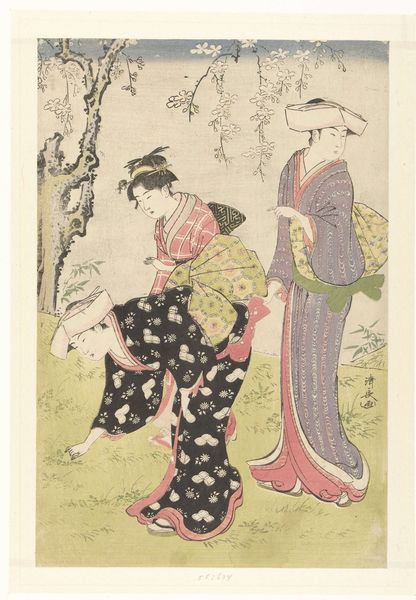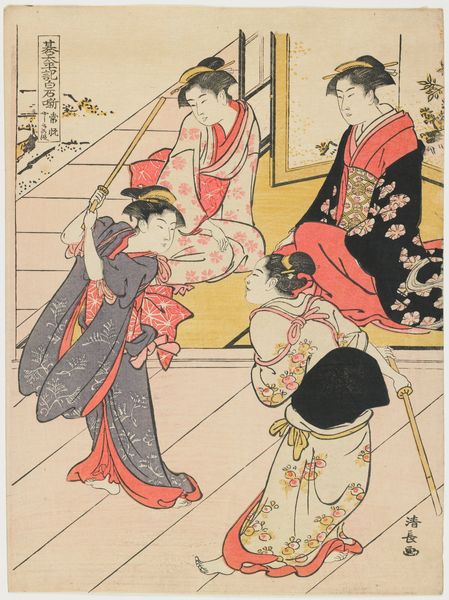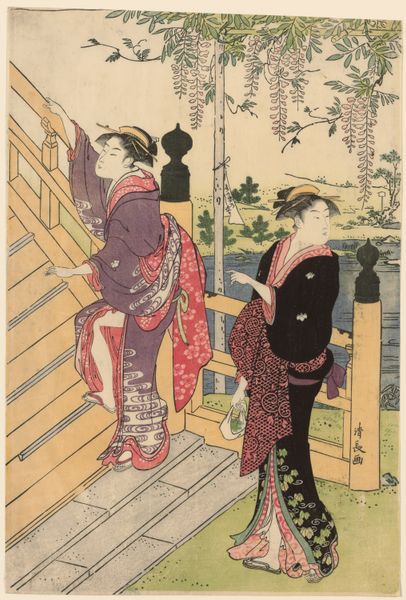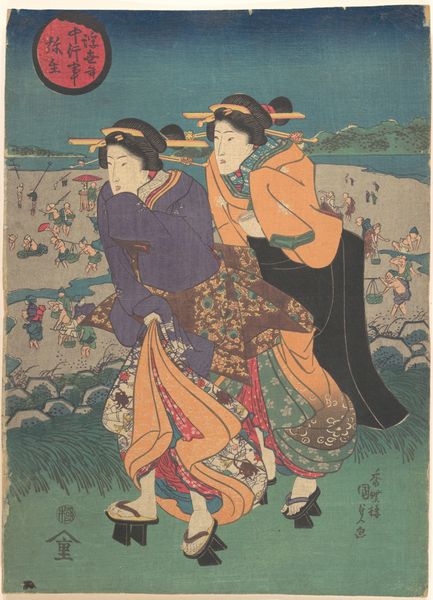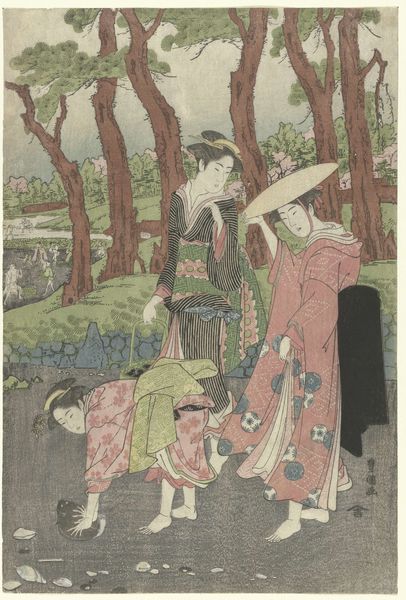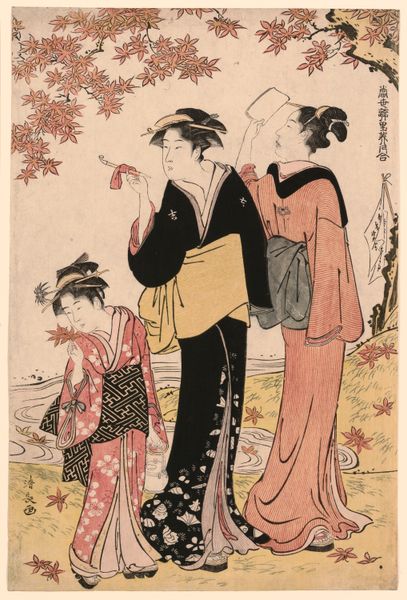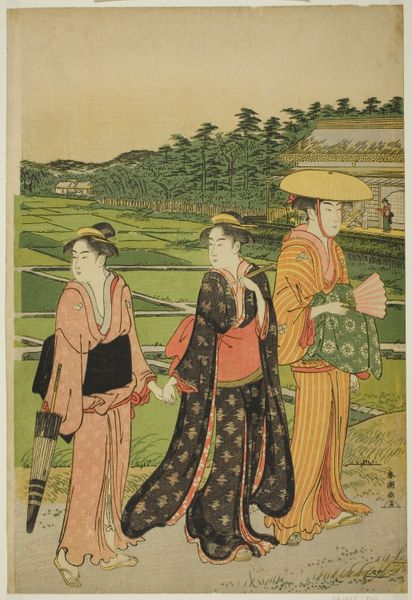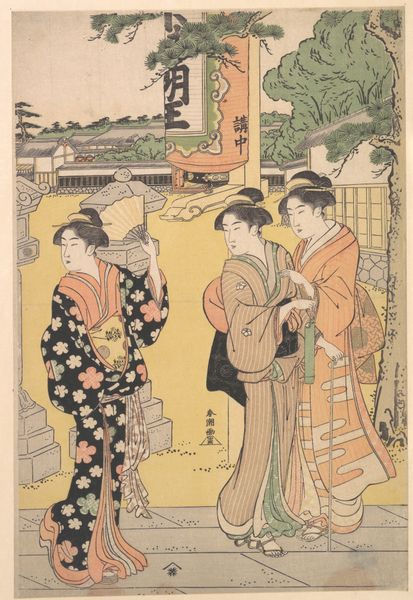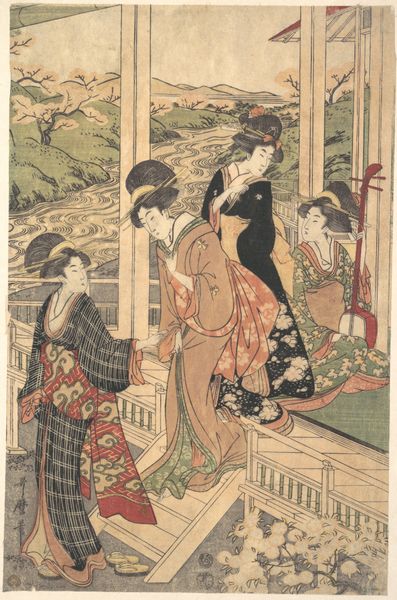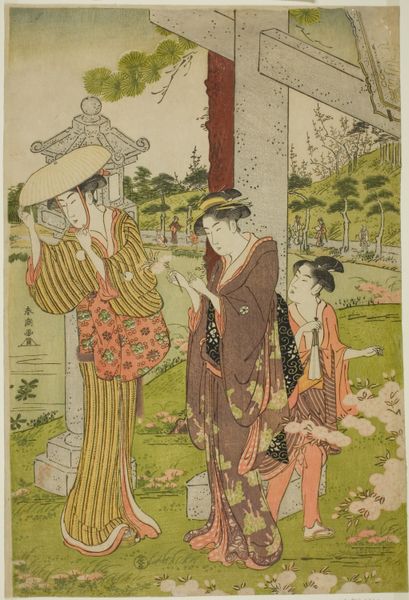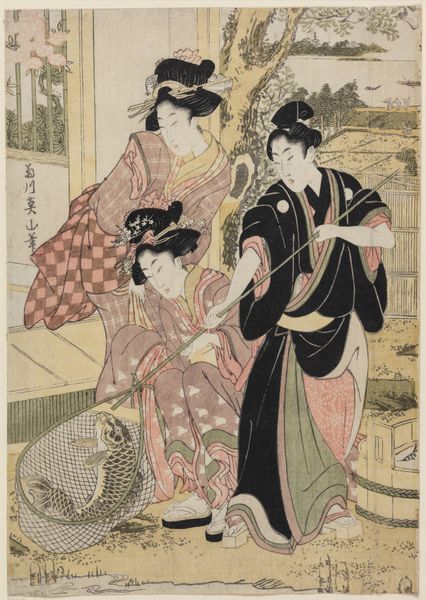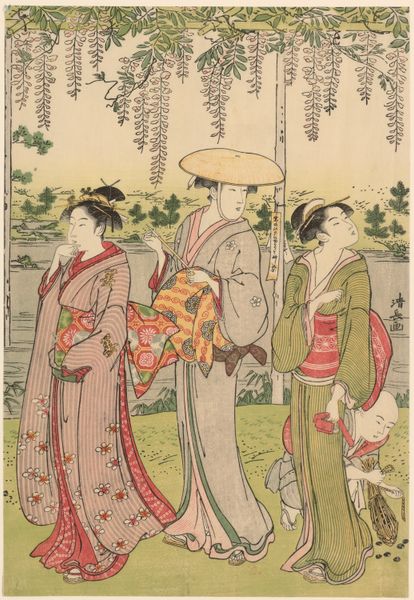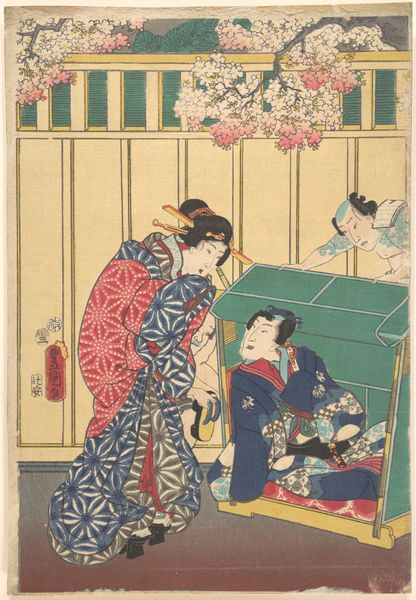
print, ink
# print
#
asian-art
#
landscape
#
ukiyo-e
#
figuration
#
ink
#
genre-painting
Dimensions: 15 1/4 × 10 1/8 in. (38.7 × 25.7 cm) (image, sheet, vertical ōban)
Copyright: Public Domain
Curator: Here we have "Outing at Mukōjima," a color woodblock print by Torii Kiyonaga, dating from around 1787. It resides here at the Minneapolis Institute of Art. Editor: It's strikingly delicate; the colors are muted, almost dreamlike. There is something very carefully rendered about it, particularly the composition. Curator: Kiyonaga was a master of ukiyo-e prints, and this piece offers a glimpse into the lives of women in the Edo period. Notice the elongated figures, a hallmark of his style, likely reflecting changing standards and increasing affluence influencing the lives and representation of women. The location, Mukōjima, was then a well-known pleasure district just outside Edo, now Tokyo, and celebrated for its plum blossoms. The print itself would have been made via an elaborate collaboration, with Kiyonaga designing the image to be meticulously carved and printed by skilled artisans, each playing an essential part in its production and affordability. Editor: The flowing robes, patterned so precisely and exquisitely, immediately pull you in. There's an elegant formality to the poses, despite the informal setting, creating a balance that is rather striking. Is that really just someone picking greens along the riverbank? What I find striking is how the figures seem arranged. There is clear relationship in this arrangement but it is still difficult to exactly name it. Curator: The genre scene speaks to the era's rising merchant class, and their consumption of art reflecting their own leisurely pursuits. The making of Ukiyo-e itself, in its multiple stages involving designing, carving, printing, and distributing, gives form to a more encompassing artistic community and market. Editor: Absolutely. The colors and their relation establish an appealing unity—a very soothing quality to them as well. Yet I can not help but also focus on how they stand against a clear hierarchy as the figures occupy space, and the flattening of perspective does push us towards an exploration of these visual hierarchies, in a visual form. Curator: Ukiyo-e prints such as these facilitated a booming interest in representations of everyday life and also popular celebrities of the time. “Pictures of the floating world,” which translates to ukiyo-e, refers not just to the visual depiction, but also the ever changing nature of contemporary fashions, celebrities, and experiences made accessible to a larger segment of the populace. Editor: For me, looking closely at the subtle variations of form brings us back to a kind of stillness and perfection which is really very striking. Curator: Exactly, and by looking closely at these visual qualities with their broader historical context and methods of making and circulating the work, we can truly unpack its significance and social role.
Comments
No comments
Be the first to comment and join the conversation on the ultimate creative platform.
